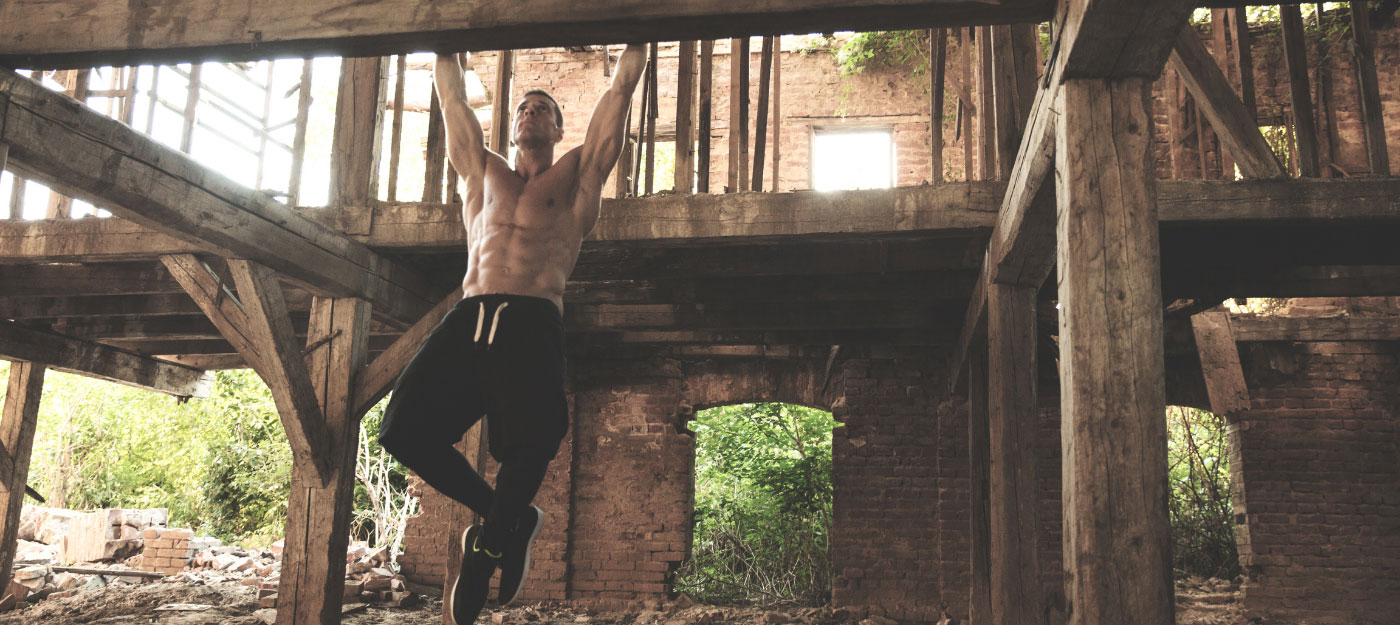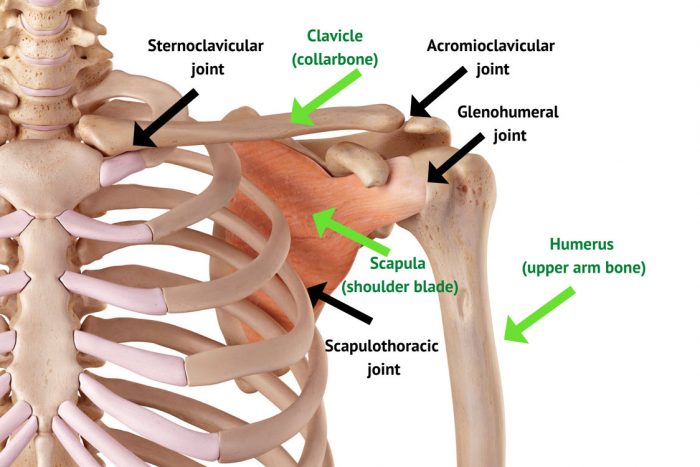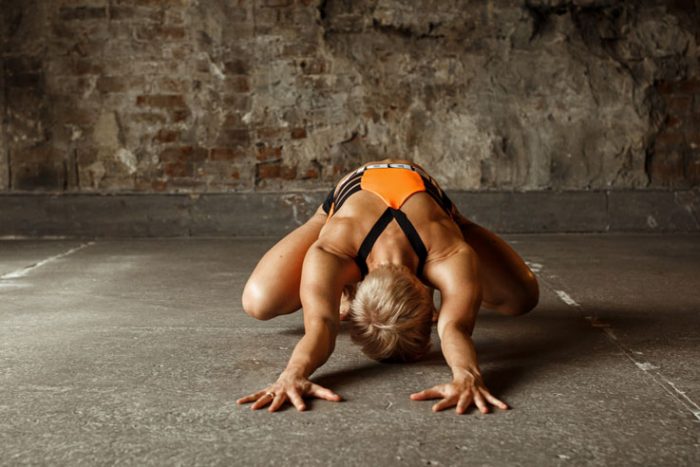
Four Bodyweight Movements for Shoulder Fitness
If you’ve ever been injured, you’ll know what it’s like to realize that simple daily tasks can feel almost impossible.
A broken thumb, ankle sprain or biceps strain can elevate something that you’d typically execute mindlessly to a whole new level of challenge. Injure a major joint like a hip or shoulder and the list of activities that can suddenly become unavailable to you escalates as well.
What causes shoulder problems?
There’s certainly no shortage of shoulder conditions that cause any combination of pain, loss of motion and weakness. Rotator cuff disorders, shoulder instability, frozen shoulders, and bursitis are among some of the most common, with 67% of the general population reported to experience some form of shoulder pain during their lifetime.
Acute (sudden) injuries and accidents certainly play a role in shoulder pain, but repetitive patterns, overuse and poor posture can all result in chronic conditions that develop over time.
Swetha Devaraj, Animal Flow Master Instructor from India, discovered this for herself after developing chronic shoulder impingement triggered by pull-ups in 2021.
“I’ve had to learn a lot of patience,” said Swetha. “I’m limited from doing anything overhead, like lifting or hand balancing. It’s forced me to slow down and address the imbalances rather than just push through.”
While wear and tear is a natural part of life as we age, an ounce of shoulder pain prevention truly is worth a pound of cure. Knowing what to do starts with understanding a bit about the mechanics of your shoulder.
It’s more than just one joint
Your shoulder is an incredibly complex region of your body. It’s actually more than just one joint; it’s four joints focused across three bones.
The bones: clavicle (collarbone), humerus (upper arm bone) and scapula (shoulder blade)
The joints:
- Glenohumeral joint
- Sternoclavicular joint
- Acromioclavicular joint
- Scapulothoracic joint

The shoulder joint and shoulder girdle are complex regions of the skeletal system.
When we talk about the ‘shoulder joint’ in everyday life, we typically refer to the glenohumeral joint–that big ball-and-socket joint that connects the upper arm bone (the humerus) to your torso.
The glenohumeral joint is the most mobile joint in the body. It’s designed for freedom of motion so that you can reach in multiple directions:
- Up (flexion) and down/back (extension)
- Up and away from the side of your body (abduction) or down and in towards the middle of your body (adduction)
- It can rotate inwards (medial/internal rotation) and outwards (lateral/external rotation)
- With your arms at shoulder level, you can bring them together (horizontal adduction) or take them apart (horizontal abduction)
Each of the other joints plays an important role in the structure and function of your shoulder complex.
The scapula’s connected to the spine
When it comes to everyday movement and avoiding poor function, the scapulothoracic joint works hand-in-hand with your glenohumeral joint.
The movement of your scapula is a critical part of a healthy, well-functioning shoulder complex. As your arm raises above shoulder height, it becomes even more important to have freely moving shoulder blades. If the motion of your shoulder girdle is restricted, then the motion of the glenohumeral joint is also limited. This limitation of range has the potential to lead to pain over time.
Strong, mobile shoulders are healthy shoulders
Great shoulder function comes down to two key factors: range of motion and strength.
The American Academy of Orthopedic Surgeons advises that the normal range of active movement of the shoulder is 180o of flexion and abduction (i.e. arm straight overhead, by your ear) and 90o for external rotation. However, the average person today typically falls short of those figures by around 20-30o, which can become problematic for anyone who wants to do anything overhead.
So, does that mean that everyone in the world needs to have the specified ranges in order to stay pain-free? Not necessarily, as researchers have shown that even those individuals who have no shoulder pain or stiffness can still fall short of the ideal range.
Technique and performance for swimming, tennis, basketball, handbalancing, baseball, chin ups, overhead squats, surfing, and so much more all become highly compromised when we don’t have the required range to safely execute the movements involved. Even that item on the top shelf can become unobtainable when we can’t reach overhead.
Add to that the average 30-40o loss of range that occurs at the shoulder throughout a lifetime and it’s easy to see how great shoulder health contrbutes to independence, longevity, and a lifetime of doing the things that you love.
The real question, then, is: what activities do you want to be able to do through your lifetime and how much shoulder range do you need in order to do them successfully and safely?
While the American Academy of Orthopedic Surgeons’ figures may be idealistic when compared to the reality, aiming for those figures (or even more) is a good idea if you want to stay pain-free during any of the activities mentioned above.

Certified Instructor Natalya Golovacheva demonstrates excellent shoulder range in Loaded Beast.
Put your hands on the ground to help your shoulders
Exploring various movements with your hands on the ground is an excellent way to provide sensory information to the nervous system about your shoulder’s position in space.
This makes quadrupedal bodyweight exercises such as these Animal Flow movements below an excellent choice as a general shoulder warm-up or as specific neuromuscular training such as in rehabilitation.
Swetha Devaraj agrees. “I’ve been spending a lot of time focusing on engaging the muscle groups that are not firing and really being aware of that. Stability work has also played an important role so having my hands and feet on the ground in Beast position has really helped.”
As with the management of any injury or condition, it’s vital to move only through pain-free ranges and to consult your health professional if you’re not sure if these movements are right for you.
Four bodyweight movements to improve your shoulder health and function
Try these four bodyweight movements that, when combined, target all joint actions at the shoulder joint and shoulder girdle.
Set a timer for 30 seconds (or 60 seconds, if you’re intermediate/advanced) and steadily perform as many smooth and controlled repetitions of the first movement as you can. Repeat for all exercises.
- Forward and Reverse Traveling Crab
- Loaded Beast Unload
- Underswitch
- Levitating Side Kickthrough
Try our 6-part Shoulder Mobility Series at Animal Flow On Demand. Designed and delivered by UK Master Instructor, Richard Scrivener, this tutorial series will help you develop strong and healthy shoulders to support your AF practice or other disciplines. Start your 14-day free trial now!
